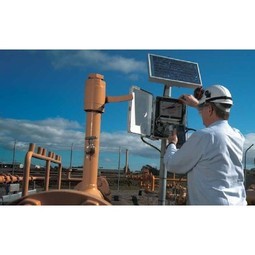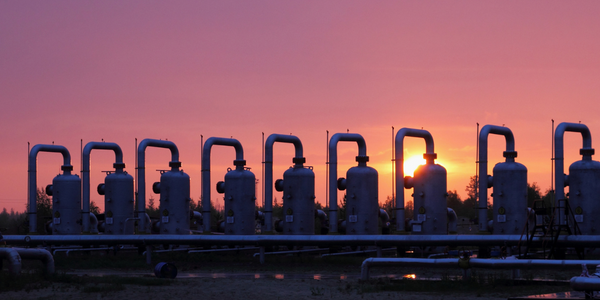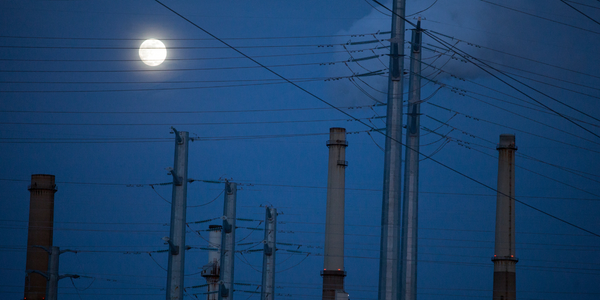Customer Company Size
Large Corporate
Region
- America
Country
- United States
Product
- ICONICS GENESIS32™
- WebHMI™
- BridgeWorX™
- ReportWorX™
- PortalWorX™
Tech Stack
- OPC Technology
- SQL Server
- Microsoft Access
- Oracle databases
Implementation Scale
- Enterprise-wide Deployment
Impact Metrics
- Productivity Improvements
- Environmental Impact Reduction
Technology Category
- Application Infrastructure & Middleware - Data Exchange & Integration
Applicable Industries
- Utilities
Applicable Functions
- Facility Management
- Maintenance
Use Cases
- Water Utility Management
- Remote Asset Management
- Process Control & Optimization
Services
- System Integration
- Software Design & Engineering Services
About The Customer
The Lincoln Wastewater System (LWWS), owned and operated by the City of Lincoln, Nebraska, provides a continuing and comprehensive effort to assure the proper collection and treatment of current and future wastewater flows and loads in an environmentally sound and cost-effective manner that protects human health and the environment. Underneath and throughout Lincoln are 970 miles of sanitary sewer lines and 14 pumping stations that keep the wastewater flowing to two municipal treatment plants. The Theresa Street Plant is located in the north central section of the City and Northeast Wastewater Treatment Plant is just south of Interstate 80 and east of Highway 77. The Theresa Street facility has a maximum capacity of 27 million gallons per day and on an average day presently treats about 18 million gallons of wastewater. The Northeast facility presently treats about 5.5 million gallons per day. That adds up to 23.5 million gallons of water per day running through the two treatment plants.
The Challenge
The Lincoln Wastewater System (LWWS) in Lincoln, Nebraska, needed a comprehensive solution to ensure the proper collection and treatment of current and future wastewater flows in an environmentally sound and cost-effective manner. The system comprises 970 miles of sanitary sewer lines, 14 pumping stations, and two municipal treatment plants, handling up to 23.5 million gallons of water per day. The challenge was to install a system that could control all manual and automatic aspects of each process, including raw water pumping, flow dispersal, aeration basin dissolved oxygen monitoring, return activated sludge flow set points/rates, and effluent flow disinfection/totalization. The system also needed to control solid waste removal from the treatment facility. In addition, the system had to be secure and allow managers to monitor any functions that the operators monitor.
The Solution
LWWS installed ICONICS GENESIS32™ OPC Web-enabled HMI/SCADA suite and its WebHMI™ Web-based real-time automation component, as well as the BridgeWorX™ (real-time data bridging), ReportWorX™ (enterprise reporting/charting/analysis) and PortalWorX™ (real-time collaboration and visualization dashboards) components of ICONICS’ BizViz™ manufacturing intelligence/business visualization suite. ICONICS solutions were recommended through LWWS’ system integrator, Olsson Associates. Lincoln Wastewater System has installed GENESIS32 server and multiple browser stations at each plant, joined together on the City’s fiber optic network. Each plant is an activated sludge wastewater facility. The LWWS SCADA system controls all manual and automatic aspects of each process including raw water pumping, flow dispersal through different treatment trains, flow control to aeration basins and plant overflow bypass. The system also controls aeration basin dissolved oxygen monitoring, mixed liquor suspended solids monitoring, return activated sludge flow set points/rates and effluent flow disinfection/totalization. The system also controls solid waste removal from the treatment facility.
Operational Impact

Case Study missing?
Start adding your own!
Register with your work email and create a new case study profile for your business.
Related Case Studies.

Case Study
IoT Solutions for Smart City | Internet of Things Case Study
There were several challenges faced: It is challenging to build an appliance that can withstand a wide range of voltage fluctuations from as low at 90v to as high as 320v. Since the device would be installed in remote locations, its resilience was of paramount importance. The device would have to deal with poor network coverage and have the ability to store and re-transmit data if networks were not available, which is often the case in rural India. The device could store up to 30 days of data.

Case Study
Automation of the Oguz-Gabala-Baku water pipeline, Azerbaijan
The Oguz-Gabala-Baku water pipeline project dates back to plans from the 1970’s. Baku’s growth was historically driven by the booming oil industry and required the import of drinking water from outside of the city. Before the construction of the pipeline, some 60 percent of the city’s households received water for only a few hours daily. After completion of the project, 75 percent of the two million Baku residents are now served around the clock with potable water, based on World Health Organization (WHO) standards. The 262-kilometer pipeline requires no pumping station, but uses the altitude differences between the Caucasian mountains and the capital to supply 432,000 m³/d to the Ceyranbatan water reservoir. To the people of Baku, the pipeline is “the most important project not only in 2010, but of the last 20 years.”

Case Study
GPRS Mobile Network for Smart Metering
Around the world, the electricity supply industry is turning to ‘smart’ meters to lower costs, reduce emissions and improve the management of customer supplies. Smart meters collect detailed consumption information and using this feedback consumers can better understand their energy usage which in turn enables them to modify their consumption to save money and help to cut carbon emissions. A smart meter can be defined in many ways, but generally includes an element of two-way communication between the household meter and the utility provider to efficiently collect detailed energy usage data. Some implementations include consumer feedback beyond the energy bill to include online web data, SMS text messages or an information display in consumers’ premises. Providing a cost-effective, reliable communications mechanism is one of the most challenging aspects of a smart meter implementation. In New Zealand, the utilities have embraced smart metering and designed cost effective ways for it to be implemented. The New Zealand government has encouraged such a move to smart metering by ensuring the energy legislation is consistent with the delivery of benefits to the consumer while allowing innovation in this area. On the ground, AMS is a leader in the deployment of smart metering and associated services. Several of New Zealand’s energy retailers were looking for smart metering services for their residential and small business customers which will eventually account for over 500,000 meters when the multi-year national deployment program is concluded. To respond to these requirements, AMS needed to put together a solution that included data communications between each meter and the central data collection point and the solution proposed by Vodafone satisfied that requirement.

Case Study
NB-IoT connected smart meters to improve gas metering in Shenzhen
Shenzhen Gas has a large fleet of existing gas meters, which are installed in a variety of hard to reach locations, such as indoors and underground, meaning that existing communications networks have struggled to maintain connectivity with all meters. The meter success rate is low, data transmissions are so far unstable and power consumption is too high. Against this background, Shenzhen Gas, China Telecom, Huawei, and Goldcard have jointly trialed NB-IoT gas meters to try and solve some of the challenges that the industry faces with today’s smart gas meters.

Case Study
British Gas Modernizes its Operations with Innovative Smart Metering Deployment
The UK government has mandated that smart meters are rolled out as standard across Great Britain by end of 2020, and this roll-out is estimated to create £14 billion in net benefits to the UK in consumer energy savings and lower energy generation demand, according to the Oxford Economics report, “The Value of Smart Metering to Great Britain.” While smart-metering systems have been deployed in many countries, the roll-out in Great Britain is unique because it is led by energy retailers, who have responsibility for the Electricity and Gas meters. The decision to have a retailer-led roll out was made by DECC (Department of Energy and Climate Change) to improve customer experience and drive consumer benefits. It has also led to some unique system-level requirements to support the unique local regulatory model.

Case Study
OneWireless Enabled Performance Guarantee Test
Tata Power's power generation equipment OEMs (M/s BHEL) is required to provide all of the instrumentation and measurement devices for conducting performance guarantee and performance evaluation tests. M/s BHEL faced a number of specific challenges in conducting PG tests: employing high-accuracy digital communications for instrumentation, shortening setup and dismantling time, reducing hardware required, making portable instrument setup, avoiding temporary cabling work and the material waste costs






